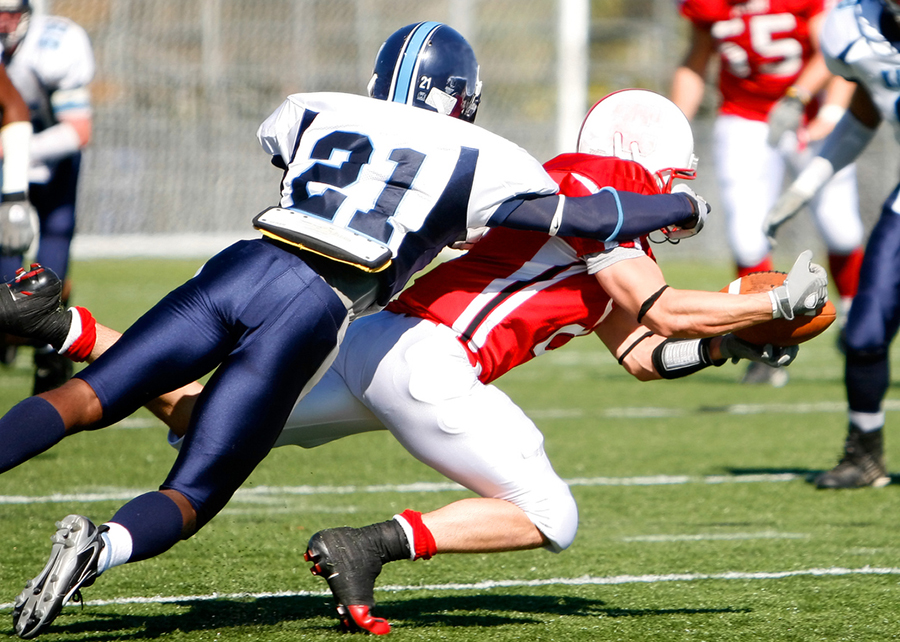By Alicia Wanek
Children are playing sports in record numbers. It is estimated that there are 30-45 million youth athletes in the U.S., and with North Texas being the fourth largest metropolitan area in the nation, many of those are our kids. The benefits of playing sports are innumerable, but the risk of injury is always present. Young athletes (under the age of 14) account for more than 3.5 million medical visits for sports-related injuries annually. The pressing need for pediatric sports medicine specialists has developed in recent years, so facilities at the Children’s Health Andrews Institute for Orthopaedics and Sports Medicine are working to not only treat injuries but also to prevent them in the first place.
Dr. James Andrews, for whom the center was named, was recently in Dallas and spoke to the issue of sports injuries in children and the work of the Institute. There is arguably no one more highly qualified to speak on the subject. Dr. Andrews has, among many other positions, served as a Senior Medical Consultant for the Washington Redskins, as the Orthopedic Medical Director for the Tampa Bay Rays, as the Medical Director for the Ladies Professional Golf Association, as the Medical Director and Orthopedic Surgeon for Auburn University, and as part of the Medical and Safety Advisory Committee for USA Baseball. He is proud to have his name affiliated now with Children’s Health, and he says, “For them to fund this is going beyond the call of duty…Youth sports is dominant here. (North Texas) probably has the highest density with youth sports in the country…This is a unique facility, and my hat is off to the Dallas community.” The Institute offers some of the most advanced techniques in athletic training and sports-related injury treatment in the nation.
Dr. Andrews says that according to their records, they estimate that sports-related injuries are up ten-fold since 2000, and he attributes much of that to two major causes—what he terms specialization and professionalism. Kids are specializing in one sport year-round and training at a professional level as early as age four. He believes it’s “too much, too fast, too soon.” Overuse injuries are on the rise because kids are using the same muscles repeatedly all year long. Baseball is a prime example. Dr. Andrews’ own grandson was once asked to pitch four games in one day. The statistics at American Sports Medicine Institute in Alabama indicate a 7- to 10-fold increase in throwing arm injuries since 2000. ASMI together with the Andrews Research and Education Foundation in Pensacola have worked closely with USA Baseball and Little League to prevent these injuries with studies examining pitch type, pitch count, and pitching mechanics in youth pitchers as well as examining the risk factors for these injuries in adolescents. Pitch count rules have now been established in Little League Baseball in all 50 states, and there has been a 35% decrease in the number of injuries among high schoolers.
In order to avoid these overuse injuries, Dr. Andrews supports “sports sampling” among youth. “It’s a myth that kids need to specialize,” he believes. He points out that 222 of the 253 players selected in the 2017 NFL draft played more than one sport in high school and 90% of Super Bowl LIII players were multi-sport athletes. These are players who have stayed healthy enough to play into adulthood and weren’t burned out too early. Dr. Andrews says that 70% of young kids participating in sports drop out by the age of 13 and lose the benefits of exercise, teamwork, and healthy competition. This is often due to pressure from coaches and parents and just getting tired of playing.
Dr. John Polousky, a pediatric orthopedist and sports medicine director at the Andrews Institute in Plano says, “Not all patients become professional athletes, but we want all of them to become professional adults who are healthy.” The focus on injury prevention is key. In his book Any Given Monday: Sports Injuries and How to Prevent Them, for Athletes, Parents, and Coaches – Based on My Life in Sports Medicine, Dr. Andrews writes, “… I think it is essential to point out that the old adage is true; an ounce of prevention is worth a pound of cure. As logic should tell us, an uninjured joint is always superior to a surgically repaired one. Yet many young athletes are being pushed to a point where their bodies are wearing out far faster than they should be.” He also writes, “Families come to me to put their dream back together, but I want to make sure that parents and coaches understand how to prevent those dreams from shattering in the first place.”
The other key to prevention is proper training, even accreditation, for youth coaches on prevention and recognition of injuries. In the state of Alabama, a curriculum provided by Andrews Sports Foundations is being used for mandatory accreditation as part of the “Coach Safely” Act. In April 2018, the state legislature passed a law mandating that all paid and unpaid youth coaches must pass a 2-hour free online course on prevention and recognition.
“Playing sports promotes a healthy lifestyle that goes on for kids’ entire lives to keep them involved in sports and an active lifestyle,” Dr. Andrews stresses. The goal of the Andrews Institute is to help to keep them on the field, in the gym, on the course, or in the water. Most of all, the hope is that they’re having fun.
Editor’s Note: Dr. Andrews’ book Any Given Monday: Sports Injuries and How to Prevent Them, for Athletes, Parents, and Coaches – Based on My Life in Sports Medicine includes a handbook on specific suggestions for 26 individual sports from lacrosse to football to skiing and snowboarding. It is published by Simon and Schuster and available on Amazon. Dr. Andrews has been key in establishing the STOP (Sports Trauma and Overuse Prevention) campaign. (Go to www.stopsportsinjuries.org for more information.)


